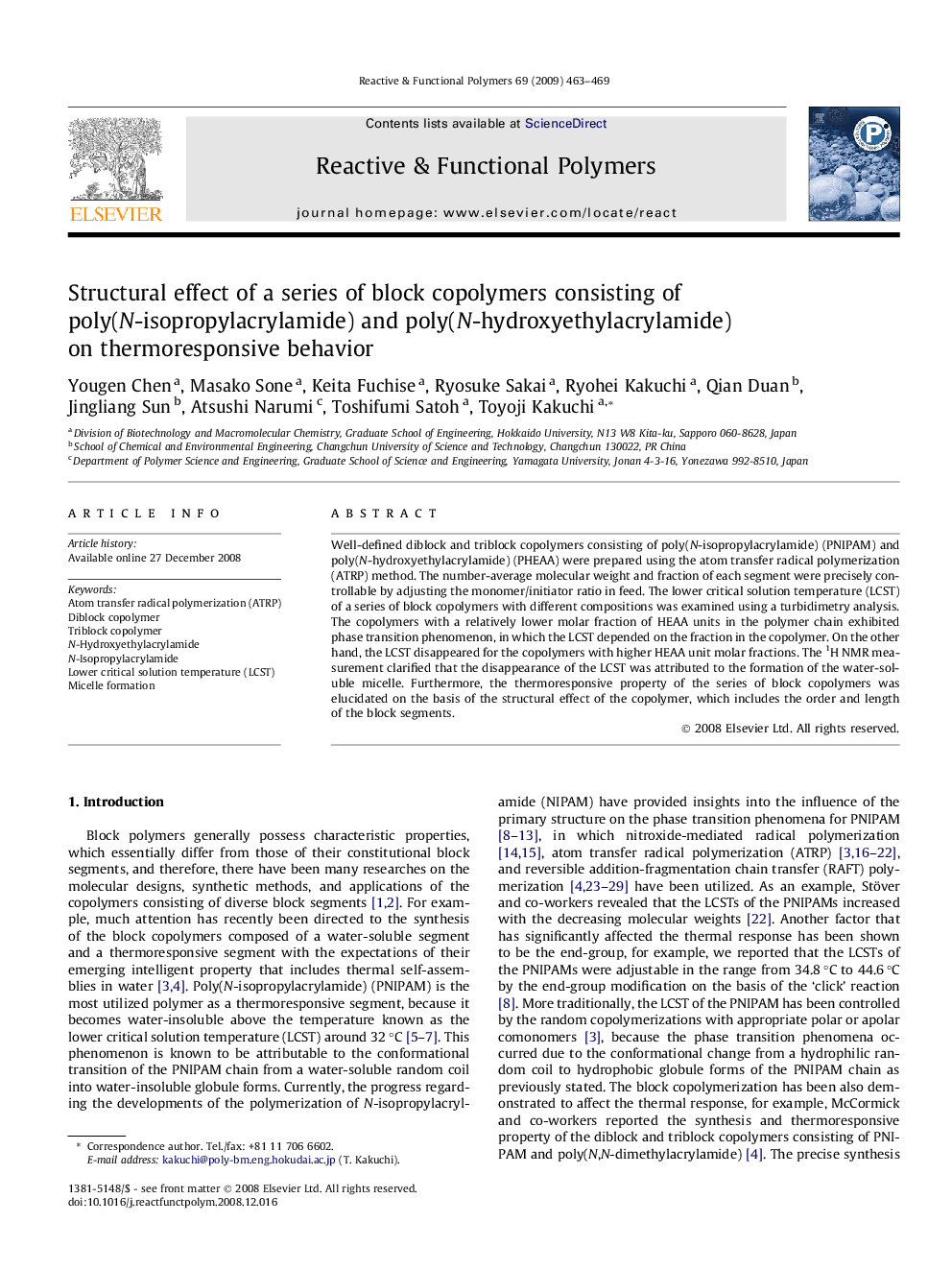| Article ID | Journal | Published Year | Pages | File Type |
|---|---|---|---|---|
| 5210975 | Reactive and Functional Polymers | 2009 | 7 Pages |
Abstract
Well-defined diblock and triblock copolymers consisting of poly(N-isopropylacrylamide) (PNIPAM) and poly(N-hydroxyethylacrylamide) (PHEAA) were prepared using the atom transfer radical polymerization (ATRP) method. The number-average molecular weight and fraction of each segment were precisely controllable by adjusting the monomer/initiator ratio in feed. The lower critical solution temperature (LCST) of a series of block copolymers with different compositions was examined using a turbidimetry analysis. The copolymers with a relatively lower molar fraction of HEAA units in the polymer chain exhibited phase transition phenomenon, in which the LCST depended on the fraction in the copolymer. On the other hand, the LCST disappeared for the copolymers with higher HEAA unit molar fractions. The 1H NMR measurement clarified that the disappearance of the LCST was attributed to the formation of the water-soluble micelle. Furthermore, the thermoresponsive property of the series of block copolymers was elucidated on the basis of the structural effect of the copolymer, which includes the order and length of the block segments.
Keywords
Related Topics
Physical Sciences and Engineering
Chemistry
Organic Chemistry
Authors
Yougen Chen, Masako Sone, Keita Fuchise, Ryosuke Sakai, Ryohei Kakuchi, Qian Duan, Jingliang Sun, Atsushi Narumi, Toshifumi Satoh, Toyoji Kakuchi,
